
That’s nearly a third of your life in which you’re not actively engaged in, well… living. That’s 25 years of lying prostrate, drooling into a pillow, unconsciously releasing, through various bodily openings, noxious gases and fluids with zero uttered apologies.
You sick, lazy human.
No wonder lucid dreaming, the practice of remaining consciously awake during REM dream cycles, has garnered massive interest among creatives and general life enthusiasts. Not that we’re discontent with laying around passing gases and fluids. The real issue lies in the unconscious aspect of sleeping: It’s time unremembered, lost.
But is the lucid dream an event that can be controlled?
Some answer “Yes!” Others: “No!”
What do I think? “Very maybe!” Especially with the help of certain nootropics.
Unless, of course, this is the dream and we just don’t know it… ⊙_ʘ
The TL;DR Version: The lucid dream is a dream in which the dreamer is aware of their dreaming. Enthusiasts may pursue the event of a lucid dream for the sake of creative exploration or fantastic escapism. While there is no way to 100% reliably induce a lucid dream, there are a number of methods to increase the likelihood of lucidity. Nootropics are one of those methods.
Page Contents
The Mind’s-Eye in a Jar
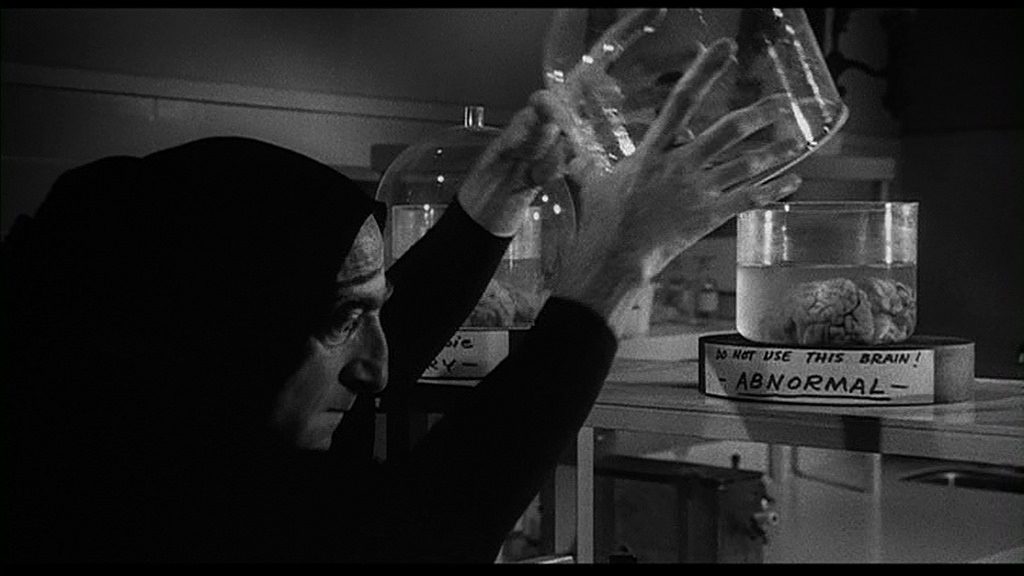
Dreaming is not unlike the Brain in a Jar thought experiment:
Suspend a brain from the body, connect the brain’s neurons to a series of corresponding wires from a supercomputer, place the brain in a jar of life-sustaining fluid. Hypothetically, if the computer were able to provide electrical impulses identical to those normally received by the brain, reality as the brain perceives it would in no way differ from how we’re presumed to perceive reality normally.
How can we know for sure we’re not simply a brain in a jar?
Likewise, a dream places your consciousness within a reality that is, unbeknownst to you, simulated. The jar being your cranium.
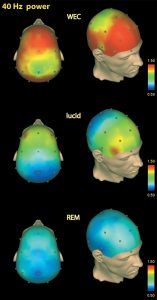
Lucid dreaming occurs when you see the “jar,” the amendable limits of your dream reality. And by seeing the “jar,” you’re able to dream with reflective awareness and agentive control.
Scientifically, lucid dreaming is a hybrid state of consciousness that features both waking (WEC) and non-lucid dreaming (REM). On an EEG scan this is expressed as concurrently high and low brain wave frequencies, with “waking” frequencies occurring in the frontal regions that facilitate working memory — an ongoing memory state concerned with immediate perceptual and linguistic processing.
Of course, not all dreams are lucid.
Many aren’t even memorable.
However, there are purported methods to enhancing the vividness and lucidity of your dreams based on our current biological understanding of dreams.
How-To: Lucid Dreaming
Some hottie gave you their number, but you left your cellphone in the car. As you race back to your car you rely on working memory to keep the numbers fresh in your mind (five-five-five-one-two-three-four! five-five-five-one-two-three-four!), all the while trying to remember where you parked your car, amidst the surrounding traffic, noise, sewage smells, etc.
Only to ultimately realize that 555 numbers are fake. (Dammit, not again!)
Working memory allows you to manipulate mental images/ideas in real-time, like remembering a phone number, solving a math problem, or visualizing a banana.

Lucid dreaming requires a strong working memory.
Theoretically, the “problem-solving” role of working memory in critical thinking is key to achieving awareness (i.e., lucidity) during a dream-state. The ability to critically engage your perceived surroundings not only bolsters dream generation in general but helps to establish your role in the simulation.
Lucid dream enthusiasts believe this ability can be supported by a number of practices, including:
- Keeping a Dream Journal – Often a point on “how to be successful” listicles, documenting dreams not only salvages creativity but supports dream recall, a mental technique that reinforces the mind’s attention on the dream experience.
- Using the Wake-Back-To-Bed Method – REM sleep is generally when vivid dreams occur. By waking up after 6 hours, during REM prime-time, staying awake for 30 minutes, then falling back to sleep, the mind may assume conscious awareness while dreaming.
- Meditating – Pre-sleep meditation (perhaps with binaural beats) may lull the mind into lower brainwave states while sustaining high-functioning brainwaves.
Maintaining functional working memory during sleep through these methods may aid your transition into a lucid dream state. But it’s at this point we need to ask ourselves: Is lucid dreaming even good for you?
The Benefits of Lucid Dreaming
Lucid dreaming is in itself neither healthy nor unhealthy, good nor bad. It’s more a tool that can be used properly –i.e., for creative enlightenment — or improperly — i.e., for delusional escapism. In fact, one study on psychosis and lucid dreaming found that:
Training dream lucidity is likely to produce safe psychological strengthening in a non-psychotic population, but in a psychotic population LD practice may further empower deliria and hallucinations, giving internal reality the appearance of external reality.“
Essentially, depending on initial cognitive conditions, lucid dreaming may either benefit creative productivity or exacerbate hallucinatory delirium… Good luck figuring that one out!
Personally, I find the advantages of enhanced working memory and critical thinking during a waking state to be more beneficial than during a dream state, but I suppose there’s no personal harm to me if aiding the latter supports the former.
Nootropic Dream Enhancement
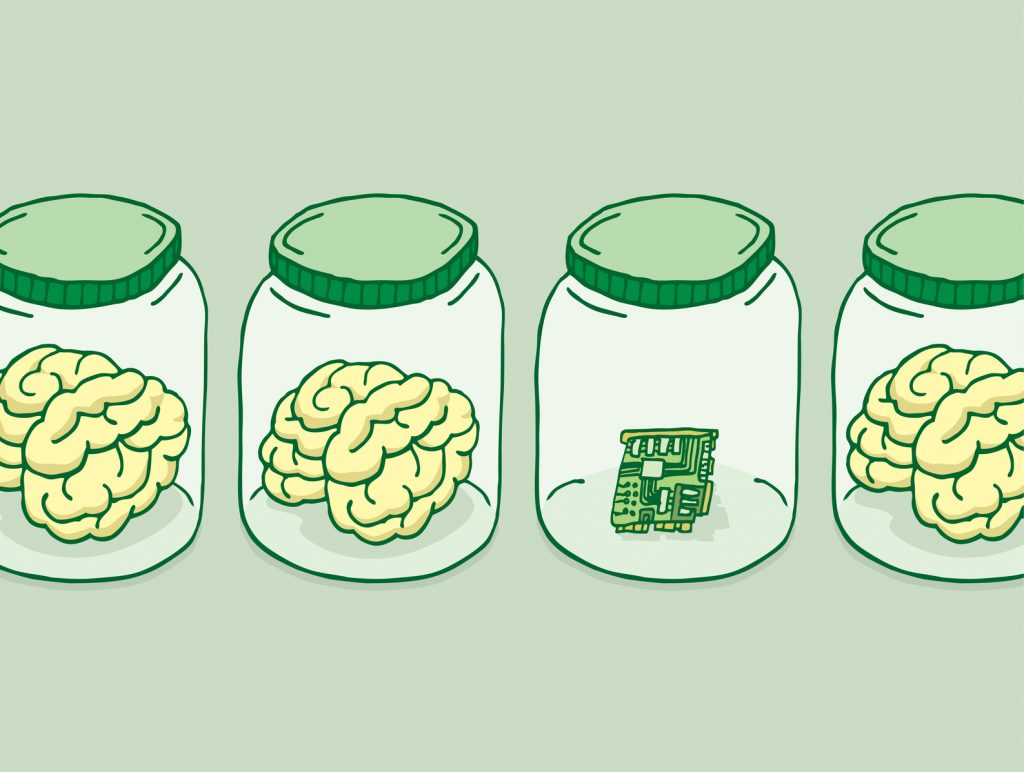
Which brings us to the primary topic at hand: Nootropics that support lucid dreaming.
I see this route of lucid dreaming as the most important, given that the benefits of nootropics extend into daytime awareness as well. And these benefits hinge on two neurotransmitters:
- Acetylcholine – facilitates learning and memory, associated with dream vividness.
- Serotonin – regulates deep sleep, increasing REM likelihood.
While these aren’t the only neurotransmitters involved in healthy sleep and dream patterns, they’re the two primary brain chemicals addressed by nootropics commonly recommended for lucid dreaming. Here are those nootropics, in addition to other substances that may support other lucid dreaming brain pathways:
Nootropics for Lucid Dreaming
Galantamine

Synthetically extracted from the bulbs and flowers of Galanthus caucasicus (or Caucasian snowdrop, a somewhat redundant plant name), Galantamine is an alkaloid commonly used to treat neurodegenerative states of memory impairment (e.g., Alzheimer’s) due its increase in concentration and bioaction of acetylcholine. Some research suggests galantamine operates by inhibiting acetylcholinesterase, an enzyme that breaks down acetylcholine, and by enhancing nicotinic receptor sensitivity (foreshadowing of a nootropic strategy listed four items below).
Given its clinical status and reported risk of side effect (GI symptoms being a big one), I generally recommend the next nootropic for general cognitive enhancement. However, galantamine, if used correctly and cautiously, may enhance the lucidity of your dreams.
Huperzine A
Throughout the subreddits and internet literature on lucid dreaming, galantamine is usually the first substance recommended for “nootropic enhancement.” The usual second: Huperzine A.
These compounds aren’t entirely different:
- Both straddle the natural-synthetic line.
- Both benefit memory and learning.
- Both inhibit acetylcholinesterase.
While Hup-A is commonly investigated for its clinical Alzheimer’s potential, it’s believed to deliver milder results as compared to galantamine. As such Hup-A makes for a valid nootropic addition to nearly any stack, especially given its low dosage requirement. For lucid dreaming it’s not viewed as absolutely necessary, but I see no reason not to supplement it. More on Huperzine A.
Piracetam or Aniracetam

This is a tricky entry due to conflicting reports.
On the one hand, piracetam has been shown to enhance acetylcholine expression, which theoretically should support lucid dreaming. A notion further supported by numerous accounts of piracetam (and even more so: Aniracetam) leading to intensely vivid and visual dreams.
On the other hand, some users report poor dream recall upon waking while supplementing piracetam and other racetams.
Given the varied responses to racetams in general, I’m not surprised to see this discrepancy in results. Having said that, I have personal belief in aniracetam for its additional advantage as an axiolytic (look at that alliteration), a bio-benefit that may further support general sleep as well as emotional dream states. More on Racetams.
Citicoline or Alpha GPC
There’s no acetylcholine without choline. And Citicoline and (to an even greater degree) Alpha GPC have the choline, making them not only great lucid dream compounds but high-value nootropics to anyone who’s a fan of better memory and brainpower.
Personally, I prefer citicoline for its two-part mix of choline and cytidine, a precursor compound to the nootropic uridine. Although, alpha GPC is a better source of just choline, supplying a higher choline concentration that’s able to cross the blood-brain barrier.
Either way, you’ll want to choose one to avoid the “brain burnout” side effect afforded by the elevated demands on acetylcholine activity required for lucid dreaming. (Just stay away from choline bitartrate. That stuff’s cheap-o.) More on Choline Donors.
Nicotine Patches
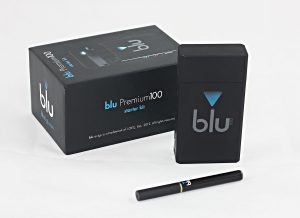
The experience serves as unplanned aversion therapy against accidentally sleeping with a nicotine patch on: I’m not doing that shit again!
Even so, many lucid dream seekers have included the patch in their nootropic regimen, often reporting of generally positive hyper-visual dream experiences while leaving it on overnight. My reasoning for this is that knowingly supplementing nicotine, which both stimulates and relaxes, for the sake of lucid dreaming may grant more control over the dream. (The operative word being “knowingly.”) On that note, nicotine seems to be one of the more reliable options for at least remembering one’s dreams. More on Nicotine.
5-HTP
5-hydroxytryptophan (or 5-HTP, if you’re a lazy sumb***zy) is a natural synthesized brain chemical often supplemented for its precursor status to feel-good chemical serotonin. In a clinical sense, 5-HTP’s neurochemical support seems to alleviate serotonin-deficient conditions of anxiety and depression, resulting in improved mood and sleep. Similar to nicotine, 5-HTP has been reported to enhance the vividness of dreams, an effect often attributed to serotonin via SSRI treatment research.
The theory: Serotonin helps regulate deep sleep, lengthening deep sleep cycles throughout the first part of the night. Once sufficient “deep sleep” demands have been satisfied, the brain engages what is called an “REM rebound” — essentially lengthened periods of REM during the second half of the night.
More REM generally amounts to more dreaming. Thus 5-HTP doesn’t necessarily enhance the lucidity of dreams on its own, but enhances the likelihood of other lucid dream nootropics working. More on 5-HTP.
B Vitamins
Namely Vitamin B6, best supplemented as Pyridoxal-5-Phosphate, which has been associated with more vivid dreams and improved dream recall. In one small preliminary study, B6 was suggested to increase cortical arousal during periods of REM sleep, leading to the hypothesis that B6 assists with sleep and dream activity through its role in converting tryptophan to serotonin. Although, researchers of the study admitted that the procedures need to be replicated and demonstrated in a sleep laboratory before determining the certainty of their results. More on Vitamin B6.
L-Theanine
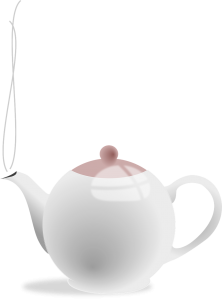
For coffee drinkers, L-Theanine is a big one. Particularly for its reduction of the “jittery” side effects of caffeine while maintaining the drug’s potent benefits on focus. Several L-theanine users have reported a return to “child-like” dreaming after supplementing l-theanine, which they felt was due to its reversal of caffeine’s inhibition of slow-wave brain frequencies and REM dream cycles.
For non-coffee drinkers, theanine is still a fantastic nootropic amino acid for its promotion of slower-thinking alpha brainwave states at no cost to focus and attention. Despite a lack of qualified research on the subject of “L-theanine and dreams,” the amino is viewed by many in the lucid dreaming community as a qualified contender for enhancing sleep quality and dream states. More on L-Theanine.
Mugwort (“Dream Plant”)
Mugwort, or Artemisia vulgaris (after the Greek goddess Artemis), is an herb rich in mythology and history: St. John the Baptist wore a belt of mugwort when he traveled, Celtic mythology utilized the herb to ward off evil, Chumash Indians honored the herb with the name “Dream Plant.” Whether smoked in indigenous ceremonies or drank as tea, mugwort is reported to intensify dream lucidity and vividness, potentially due to the plants engagement in the serotonergic system.
Note of caution: Mugwort can be demanding on the digestive tract, requiring additional water to move through your system. So hydrate the funk up before supplementing.
Calea Zacatechichi (“Dream Herb”)
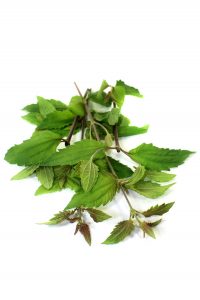
Calea Zacatechichi (or Calea Z, if you’re an apple-picking hipster) is a small plant native to Mexico and Central America, occasionally referred to as the “Dream Herb” for its folkloric role in obtaining divinatory messages during sleep. In a scientific analysis of Calea Z’s alleged “Dream Herb” position, low doses of Calea Z extract were found to increase subjective reports of dreams as compared to placebo and diazepam, indicating an “increase in hypnagogic imagery occurring during superficial sleep stages.”
Due to Calea Z’s support of “superficial sleep stages,” it’s often recommended to supplement capsulated Calea Z extract after 4-6 hours of sleep, perhaps as part of the Wake-Back-to-Bed Method, during the early morning hours, before entering the REM cycles of sleepy fun-time.
Nootropics for Insomnia
Fun Fact of the Day: There’s no dreaming without sleep. And while a few nootropics listed above may help add a few extra Z’s to your night (L-Theanine, 5-HTP, Aniracetam), there are additional nootropics that may directly help with the falling aspect of sleep. Including:
- Melatonin – the OTC go-to sleep aide for most consumers.
- Phenibut – anxiolytic modification of relaxant chemical GABA.
- Picamilon – synthetic combo of GABA and niacin.
- Ashwagandha – anti-stress Ayurveda adaptogen for restful sleep and vitality.
- Magnesium – second dominant bodily electrolyte, stimulates GABA receptors
Given the various pathways addressed by these nootropics, there is a chance that taking some of them may inhibit your chances of lucid dreaming. (I’m claiming this strictly on a hypothetical basis.) If you find the vividness of your dreams declining with any of these (namely Phenibut and Picamilon), consider swapping them for milder sleep aides.
My Experience with Lucid Dreaming
This highly personal and subjective report comes with a heavy YMMV disclaimer. Because with or without these nootropics, I have pretty funky dream patterns that, fortunately, were never exacerbated by any of the aforementioned nootropics.
Partly because I’m fairly conservative when it comes to late-night nootropics.
Mainly because I do not wish to exacerbate my funky dream patterns.
The total of which that can be summed up by the general term Parasomnia: “a category of sleep disorders that involve abnormal movements, behaviors, emotions, perceptions, and dreams that occur while falling asleep, sleeping, between sleep stages, or during arousal from sleep.” The most harrowing and most frequent disorder being sleep paralysis, which is almost exactly as it sounds: A temporary state of paralysis upon falling asleep or waking up in which the mind is awake but the body is asleep, or “paralyzed.”
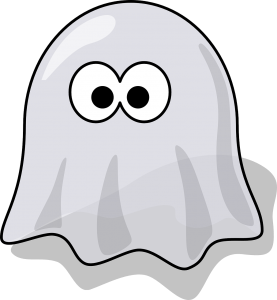
Not that I’m claiming individuality on this: I realize that plenty of sleepers experience temporary bouts of paralysis. Yet, in my experience it happens far too frequently, and almost always results in a somewhat lucid nightmare, a dream-state in which I realize I’m dreaming but lack the abstract understanding of my mental agency.
During these incidents, reality and dream coalesce in a way that through my half open eyes I see the literal room I’m sleeping in filled with various cliché cretins of my mind: dark shadowy figures, black mangy dogs, fetuses crawling on walls, et cetera. My only escape is to focus on my breathing until I can inspire a giant inhale to reattach body to mind, and vice versa.
For that reason I’m somewhat turned off to the pursuit of lucid dreams, however I have had positive experiences with nootropic-enhanced dreaming, even though I’ve never acquired the “god-like” dream manipulation that supposedly defines the experience.
Best Nootropic Supplements for Lucid Dreaming
With or without supplements, lucid dreaming is an elusive task. However, theoretically, by supplementing the nootropics listed above (and perhaps others not listed here), you might achieve lucid dreaming with greater success. No promises here, but there are a few premade nootropic supplements that I believe may help your lucid dreaming adventures. And, well, here they are:
Performance Lab Sleep
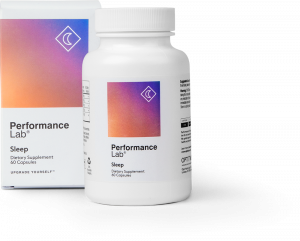 As I already stated, without sleep we cannot dream. And if we can’t dream, we can’t dream lucidly. Performance Lab Sleep is one of the best nootropic sleep aid supplements I’ve come across in awhile — and this is coming from a geek who’s reasonably skeptical of melatonin-powered sleep aids.
As I already stated, without sleep we cannot dream. And if we can’t dream, we can’t dream lucidly. Performance Lab Sleep is one of the best nootropic sleep aid supplements I’ve come across in awhile — and this is coming from a geek who’s reasonably skeptical of melatonin-powered sleep aids.
As opposed to your run-of-the-mill synthetic melatonin supplements, Performance Lab Sleep naturally sources its melatonin from tart cherry, supplying cleaner, more reliable sleep enhancement — minus the next morning grog. On top of that, Performance Lab Sleep also stacks high quality magnesium and L-tryptophan for even better sleep quality.
If a lack of sleep is your only barrier towards lucid dreaming, Performance Lab Sleep works very well at catching those Zzz’s. (And you won’t feel like a melatonin-drenched pile the next morning.)
Want some? Get Performance Lab Sleep here.
Read my in-depth review on Performance Lab Sleep.
Mind Lab Pro
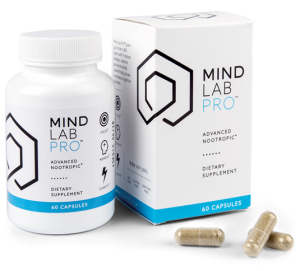 While Mind Lab Pro is much more than a cholinergic enhancing nootropic stack — it also benefits catecholamines, circulation, brainwaves, etc., etc. — I tend to think of Mind Lab Pro whenever the term “cholinergic” comes up. This is due to the stack’s exceptionally high quality Citicoline (supplied as Cognizin®) and Bacopa monnieri extract, which (similar to Hup-A) inhibits acetylcholine breakdown. Together, these ingredients may elevate acetylcholine levels to lucid dreaming standards.
While Mind Lab Pro is much more than a cholinergic enhancing nootropic stack — it also benefits catecholamines, circulation, brainwaves, etc., etc. — I tend to think of Mind Lab Pro whenever the term “cholinergic” comes up. This is due to the stack’s exceptionally high quality Citicoline (supplied as Cognizin®) and Bacopa monnieri extract, which (similar to Hup-A) inhibits acetylcholine breakdown. Together, these ingredients may elevate acetylcholine levels to lucid dreaming standards.
Not only that but Mind Lab Pro also carries a significant amount of L-theanine for alpha brainwave enhancement. As I mentioned earlier, caffeine’s brainwave excitation may prevent the brain from achieving slow-wave brain frequencies at night. Mind Lab Pro’s non-caffeinated, non-stim supply of L-theanine may further help the brain relax at night, setting up a calm, gooey foundation for citicoline + bacopa’s cholinergic boosts to flow freely.
Want some? Get Mind Lab Pro here.
Read my in-depth review on Mind Lab Pro.
Lucidimine
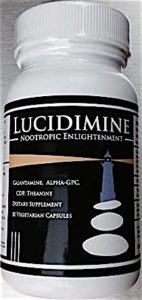 Of the nootropic supplements listed here, Lucidimine is the only one I haven’t personally taken. So, take this addition with a grain of salt (or not at all). But given the formula’s specific intent to enhance your lucid dreaming potential, as well as the ingredients chosen — e.g., galantamine — it’d seem almost silly not to include it on this post.
Of the nootropic supplements listed here, Lucidimine is the only one I haven’t personally taken. So, take this addition with a grain of salt (or not at all). But given the formula’s specific intent to enhance your lucid dreaming potential, as well as the ingredients chosen — e.g., galantamine — it’d seem almost silly not to include it on this post.
If Lucidimine has any edge over the supplements listed above, it’s due to galantamine. Many redditors and other nootropic forum dwellers swear by this stuff. And while you could easily find a perhaps cheaper standalone galantamine supplement, Lucidimine’s mix of galantamine with cholinergics makes it a true lucid dreaming supplement.
On that note, Lucidimine does use the cheap-O choline bitartrate, in addition to alpha-GPC and citicoline, somewhat lessening its cholinergic impact. So, if you can find a similar product with a better cholinergic profile, I say go for that over this.
Want some? Get Lucidimine here.
Conclusion
Not all nootropics work for everyone.
Not everyone experiences lucid dreams.
Not everyone believes in lucid dreams.
So if you leave this article disappointed that the nootropics listed above didn’t entail lucid dreaming, a contentious concept on its own, don’t come back here screaming in the comment section. Lucid dreams are an elusive experience.
Hopefully, for the avid lucid dream seekers, these methods help. However, if I can end on a slightly pretentious, preachy, pedantic note: Don’t forget about the real reality as you travel down that rabbit hole. (Assuming this is the real reality.)
Read my Best Pre-Made Nootropic Supplements list here.
